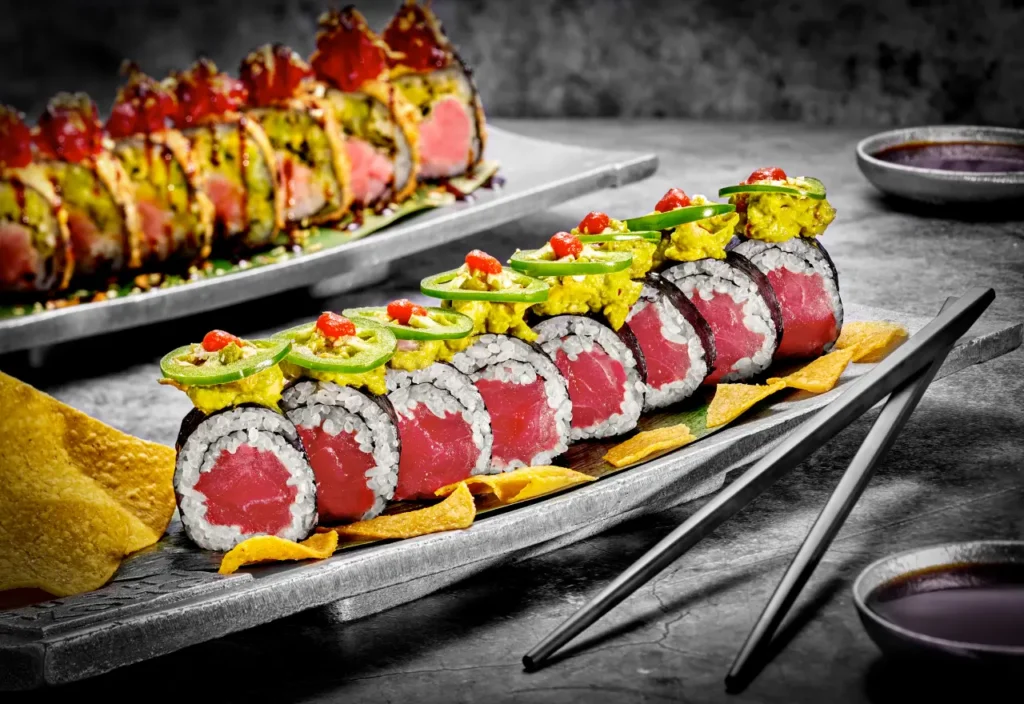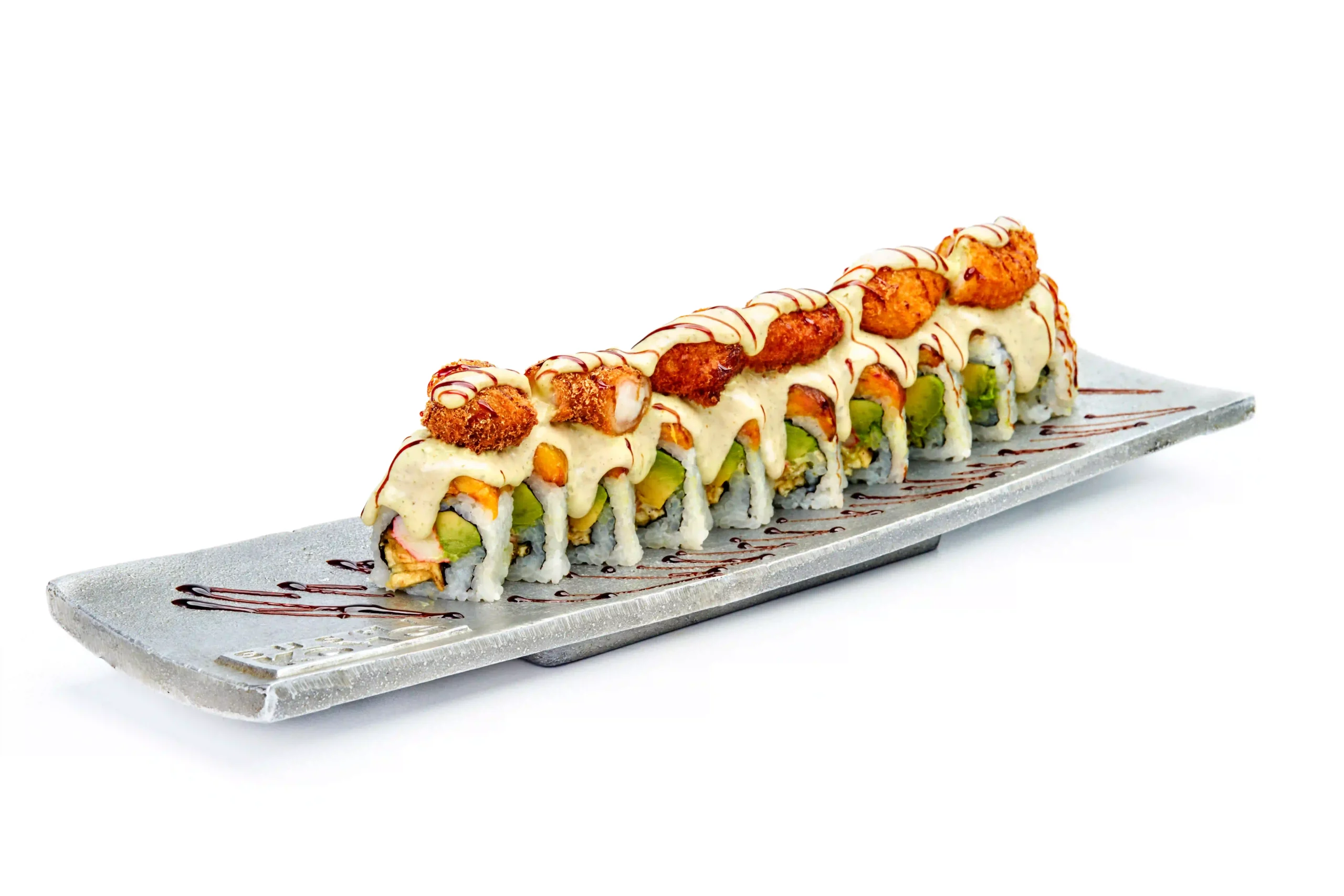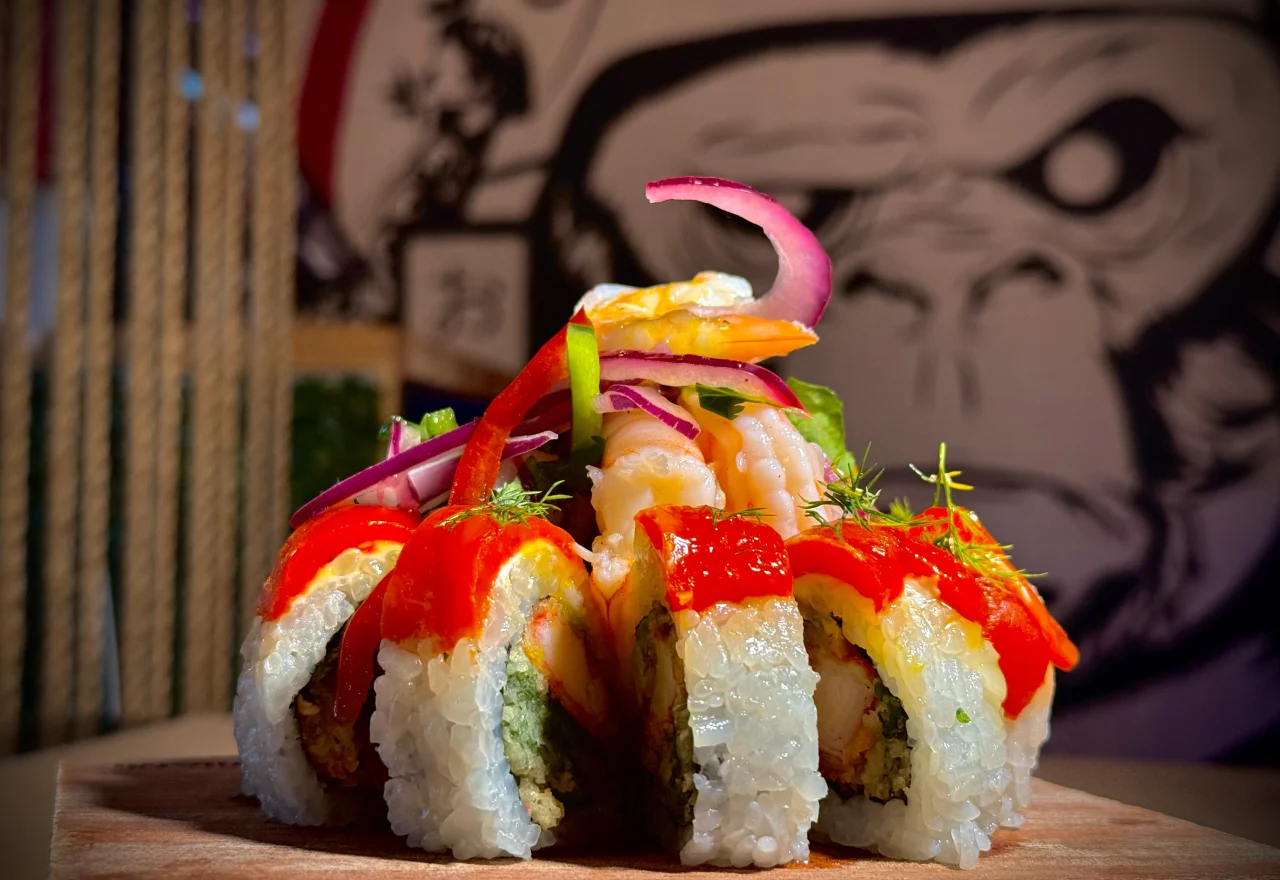Sushi, a beloved dish that has become synonymous with Japanese cuisine worldwide, has a rich and fascinating history that dates back over a thousand years. While today’s sushi is often enjoyed as a sophisticated culinary art, its origins can be traced to ancient preservation methods. The earliest form of sushi, known as “narezushi,” involved fermenting fish with rice to preserve it, a practice that dates back to Southeast Asia around the 2nd century. This method slowly made its way to Japan, where it evolved into the dish we know and love today.
As centuries passed, sushi underwent significant transformations, adapting to Japan’s evolving tastes and culinary innovations. By the Edo period (17th to 19th century), the dish had transitioned into its modern form, with fresh fish, vinegared rice, and other ingredients becoming the central focus. This period saw the rise of nigiri sushi, which was crafted to be eaten on the go, reflecting the fast-paced life of urban Japan. Over time, sushi’s popularity spread beyond Japan’s borders, becoming a global phenomenon. Today, sushi represents not only Japan’s culinary heritage but also its cultural export to the world.
Early Beginnings: The Birth of Narezushi – The Ancient Roots of Sushi
The origins of sushi trace back to ancient times, with the earliest form known as narezushi. Narezushi began as a method of preserving fish by fermenting it with rice. This technique, which originated in Southeast Asia around the 2nd century, allowed fish to be stored for long periods, a vital process in regions without refrigeration. The rice, used for fermentation, was not eaten, but served as a medium for curing the fish. This preservation method spread to China and eventually reached Japan, where it was embraced and adapted to local preferences, marking the first step in sushi’s long evolution.
In Japan, narezushi became increasingly popular, especially in the Kansai region, where the fermented fish was eaten with rice. Over time, the fermentation process became shorter, and the fish was consumed alongside the rice, leading to a shift in how sushi was enjoyed. By the 8th century, this early form of sushi began to evolve further, influenced by local ingredients and techniques, setting the stage for the more recognizable forms of sushi that would emerge centuries later. The birth of narezushi was crucial in laying the foundation for what would eventually become one of Japan’s most iconic culinary traditions.
Sushi’s Introduction to Japan – A Culinary Influence from Across the Seas
Sushi’s journey to Japan began around the 8th century, when the method of fermenting fish with rice as a preservation technique spread from Southeast Asia to the Japanese archipelago. The practice was initially adopted as a way to preserve fish, particularly in areas where refrigeration was unavailable. The Japanese adapted this technique to suit their local needs, with rice playing a key role not just in fermentation but also in adding a new dimension of flavor. The dish began to evolve, and by the time it reached Japan, it was already being enjoyed alongside rice, signaling the start of sushi’s transformation into something uniquely Japanese.
As the dish continued to evolve, it began to take on distinct characteristics suited to Japan’s regional tastes and available resources. Early sushi in Japan was influenced by both Chinese and Southeast Asian culinary traditions but soon became a staple of Japanese cuisine, refined over the centuries. Over time, sushi spread from the Kansai region to other parts of Japan, including the capital city, where it was embraced by both commoners and the aristocracy. Sushi’s introduction to Japan laid the groundwork for its eventual transformation into the beloved dish we recognize today, with evolving techniques and an ever-expanding menu of ingredients.
The Evolution of Sushi During the Heian Period – Refining a Culinary Tradition
During the Heian Period (794-1185), sushi began to evolve significantly as Japanese culinary techniques matured. While narezushi remained popular, a new form emerged known as hishii-zushi, which used less fermentation and allowed the rice to be eaten alongside the fish. The rice was still a crucial part of the preservation process, but it was becoming more flavorful, with vinegar being added for taste. This shift marked a crucial step in sushi’s evolution, as it reflected a growing preference for fresh ingredients and the integration of rice into the dish, rather than discarding it after fermentation.
As the Heian period progressed, sushi became more refined and sophisticated, aligning with the cultural changes of the time. The aristocracy in the imperial court began to appreciate sushi as both a culinary art and a symbol of status. This period also saw the introduction of various regional variations, with different ingredients and preparation methods depending on local resources. Sushi’s transformation during the Heian period helped to set the stage for its continued development in later centuries, as it shifted from a simple preservation method to an integral part of Japanese dining culture. The foundations of modern sushi were laid during this time, paving the way for the vibrant and diverse forms we enjoy today.
Sushi’s Transformation in the Edo Period – A Culinary Revolution
The Edo Period (1603-1868) marked a turning point in the history of sushi, as it transformed from a preservation method into the fresh, fast, and flavorful dish we recognize today. During this time, the development of nigiri-zushi, or hand-pressed sushi, revolutionized how sushi was prepared and consumed. This new style, which featured thin slices of raw fish atop small balls of vinegared rice, was crafted to be eaten quickly, catering to the bustling lifestyle of Edo (modern-day Tokyo). Nigiri sushi became a popular street food in the city’s growing urban landscape, providing an easy and affordable meal for busy merchants, artisans, and samurai alike.
This period also saw the rise of sushi’s widespread popularity, as it shifted from being a food enjoyed primarily by the elite to something accessible to the masses. Edo’s sushi chefs innovated further, introducing new combinations of ingredients, including a variety of seafood and vegetables, making sushi an exciting and diverse culinary experience. The cultural changes of the Edo period, including the development of an emerging middle class and advancements in food preservation techniques, helped sushi become an integral part of Japanese dining culture. By the end of the Edo period, sushi had cemented its place as a beloved dish, laying the foundation for its global fame in the centuries that followed.
The Rise of Modern Sushi: From Street Food to Fine Dining – Sushi’s Journey to Global Elegance
In the late 19th and early 20th centuries, sushi experienced a significant transformation as it shifted from a humble street food to a refined dish enjoyed in upscale restaurants. The emergence of sushi as a high-end culinary experience coincided with Japan’s modernization and the influence of Western dining customs. As Japan opened up to the world during the Meiji era, sushi chefs began to perfect their craft, focusing on the quality of ingredients, presentation, and techniques. This newfound attention to detail and artistry helped elevate sushi to a symbol of Japanese sophistication, and it soon became an elegant dish served in fine dining establishments both in Japan and abroad.
By the mid-20th century, sushi began to spread internationally, gaining a reputation for its delicate flavors and meticulous preparation. As sushi bars and sushi restaurants opened up in cities around the world, the dish underwent various adaptations to suit local tastes, while still maintaining its traditional roots. The rise of sushi in global cuisine mirrored Japan’s increasing influence on the world stage. Today, sushi is not only a staple of Japanese cuisine but also a sophisticated and diverse dining experience, ranging from casual conveyor belt sushi to Michelin-starred restaurants, where innovation and tradition blend to create a truly global culinary phenomenon.
Cultural Significance and Global Expansion – Sushi’s Journey from Tradition to Worldwide Icon
Sushi has transcended its origins to become a symbol of Japanese culture, deeply embedded in both everyday life and ceremonial occasions. Beyond its culinary appeal, sushi reflects the Japanese philosophy of simplicity, balance, and respect for nature. The meticulous preparation of sushi, from selecting the freshest ingredients to perfecting each dish’s presentation, aligns with Japan’s broader cultural values of precision and attention to detail. As a result, sushi has come to embody not only a culinary tradition but also a cultural artifact that showcases Japan’s rich history and its profound connection to the natural world.
The global expansion of sushi is a testament to its universal appeal and adaptability. In the late 20th and early 21st centuries, sushi began to spread rapidly across the globe, with sushi bars and restaurants popping up in major cities worldwide. This global phenomenon sparked innovations, such as the creation of sushi rolls that cater to local tastes, like the California roll in the United States. Sushi’s popularity has continued to grow, becoming a mainstream cuisine enjoyed by people of all cultures. Today, it is not only a celebrated food item in fine dining but also a casual, accessible option in supermarkets and food courts, cementing its status as a global culinary icon.
Sushi: A Timeless Journey from Tradition to Global Phenomenon
Sushi’s evolution from an ancient preservation method to a refined global delicacy showcases its deep-rooted cultural significance and adaptability. From its humble beginnings as narezushi in Southeast Asia to the sophisticated nigiri sushi of the Edo period, and eventually its rise as an elegant dish enjoyed worldwide, sushi has become much more than a meal—it is a representation of Japan’s culinary artistry. Over centuries, sushi has not only preserved its authenticity but has also embraced new techniques and ingredients, ensuring its place as a beloved dish across the globe.
Today, sushi continues to inspire and delight food enthusiasts everywhere, and in Miami, Sushi KONG stands out as the premier destination for an unparalleled sushi experience. Whether you’re a longtime sushi lover or trying it for the first time, Sushi KONG offers a blend of tradition and innovation that will leave you craving more. Visit our website for more information and to explore our menu, ensuring that every visit to Sushi KONG is an unforgettable culinary journey.




